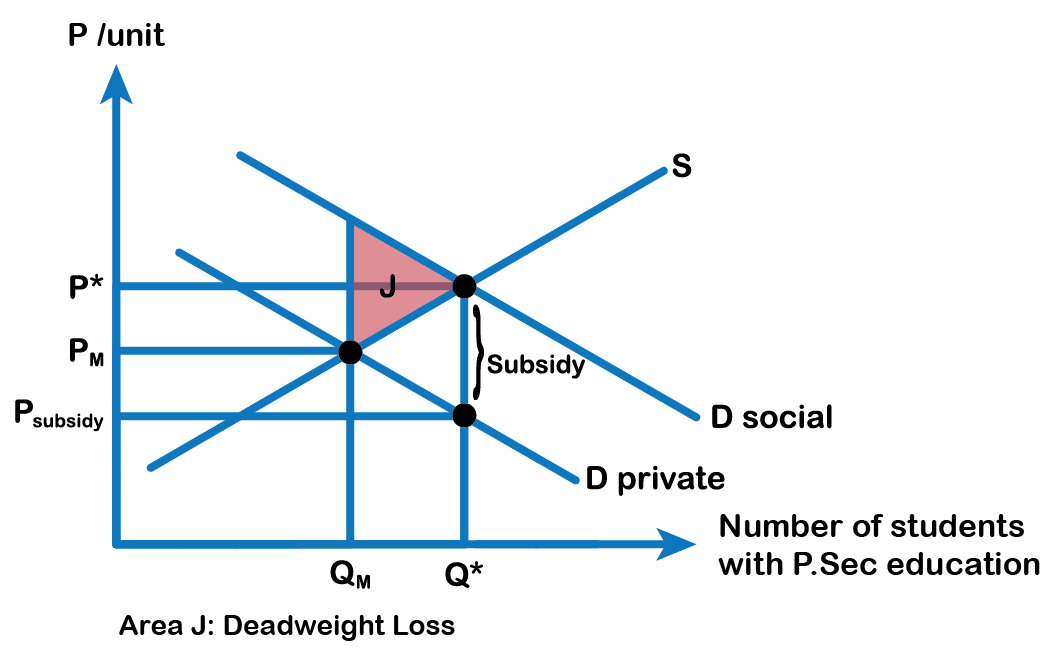5.2 (B) ‘Internalizing’ an Externality: Subsidizing post secondary education
The appropriate public policy response to a positive externality, like post-secondary education, is to help the party creating the positive externality receive a greater share of the social benefits. In the case of education, an effective policy might be to provide a subsidy to those who choose to get a college or university education.
Fig 5.5 below shows the market for post-secondary education. The market demand curve D for post-secondary education reflects only the marginal private benefits that the educated individuals receive such as better career prospects and income. Assuming that there are no spillover costs of education, the market supply curve is given by the marginal private cost of providing post-secondary education.

The equilibrium quantity of people receiving post-secondary education in the market, where D = S is Q-Market and the price of post secondary education is P-Market. However, spillover benefits exist in this market because others, those who chose not to obtain higher education, receive a positive externality from those who attend college or university. When we add the spillover benefits to the marginal private benefit of post-secondary, the marginal social benefit of education is given by D-Social. We see that the socially optimal level of people receiving college/university education is greater than the market quantity (Q* exceeds Q-Market) and the corresponding price of post-secondary education, if the market were to produce Q*, would be at P*. Unfortunately, the marketplace does not recognize the positive externality and the number of people receiving college education tends to go under produced and under-consumed and generates a deadweight loss of area J.
One policy would be to provide a subsidy to students who wish to get a post-secondary education. This subsidy would act as “income” that one could use to buy higher education and, if the subsidy were exactly equal to the per-unit spillover benefits, it would increase market equilibrium to the efficient quantity of Q* and the price to P* where D-social = S. Suppliers of higher education would receive payment of P* per student, while consumers of college education would only pay a price of P-Subsidy. When the government uses a subsidy in this way, it produces the socially optimal quantity of post-secondary education.
Attribution
“5.2 Indirectly Correcting Externalities” in Principles of Microeconomics by Dr. Emma Hutchinson, University of Victoria is licensed under a Creative Commons Attribution 4.0 International License, except where otherwise noted.
“Chapter 13 Positive Externalities and Public Goods” in Principles of Economics 2e by OpenStax is licensed under Creative Commons Attribution 4.0 International License.

